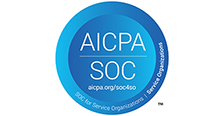
COVID-19
-
April 23, 2020
Eastern District of Pennsylvania Orders New Procedure for Forbearance Agreements
Client Alert
Written by: Michael J. Shavel, Esq.
The United States Bankruptcy Court for the Eastern District of Pennsylvania has released an order providing for new procedural guidelines to address the procedure for implementing forbearance agreements in pending chapter 13 cases (the “Order”). The Court recognizes that as a result of the national emergency created by COVID-19, servicers and lenders are entering into forbearance agreements with borrowers at a much higher frequency and that these agreements have a direct impact on debtor’s ongoing chapter 13 proceedings.
Going forward, a creditor shall notify the court, the trustee, and all interested parties of the existence of a forbearance agreement by filing a Notice of Payment Change/Forbearance (the “Forbearance Notice”). The Forbearance Notice must be filed on the Claims Register and on the main case docket and must be served on debtor, debtor’s counsel, and the Trustee. The Forbearance Notice must state the terms of the forbearance, including the starting date and termination date of the forbearance period and any other material terms and conditions. The Order also clarifies that when the forbearance period expires, the burden is on the debtor to take affirmative steps to address the status of the mortgage account.
Guidelines and regulations are changing quickly in these unprecedented times and our attorneys are tracking these changes as they occur. Hill Wallack’s experienced bankruptcy attorneys are here to represent your interests and ensure you are protected.
For more information this new procedure, contact Michael J. Shavel, Esq. at 267-759-2071or Eric P. Kelner, Esq. at 609-734-4451.
©2020 Hill Wallack LLP. All rights reserved. Please contact Hill Wallack for permission to reprint. Notice: The purpose of this Client Alert is to identify select developments that may be of interest to readers. The information contained herein is abridged and summarized from various sources, accuracy and completeness of which cannot be assured. This Client Alert should not be construed as legal advice or opinion, and is not a substitute for the advice of counsel.


